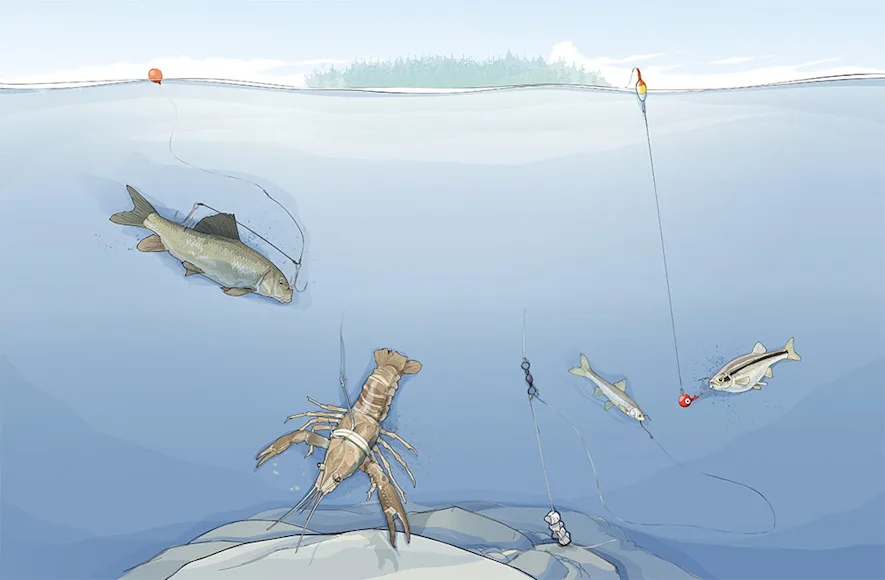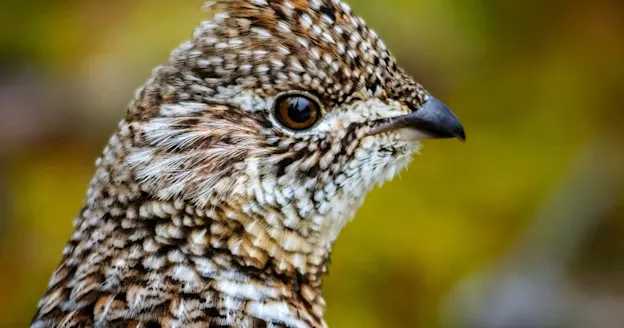_We may earn revenue from the products available on this page and participate in affiliate programs. Learn more ›
_

Four live-bait presentations guaranteed to trick fall gamefish. Mike Sudal
During this transitional time of year, it’s not uncommon for one day of lights-out action to be followed by a total skunking. Even traditional methods of predicting fish behavior like tracking fronts, weather, and pressure changes don’t always help you get on the bite now. There is no question that every species of fish needs to pack on weight for the long winter. Despite this fact, species like muskies, smallmouths, trout, and crappies can be reluctant to hit artificial lures as the waters cool in autumn. The solution? Ditch the plastic and go all in with live bait. These four presentations will get mouths open when every hard bait produces nothing but hard luck.

Fall muskies are looking to pack on the pounds. Mike Sudal
Muskies: The Sucker Punch
Big muskies need lots of calories with winter approaching because as soon as the ice comes off, the spawn turns on. Even anglers who usually throw artificials find it hard to leave the dock come fall without a few live suckers. Proper rigging of these baits, which measure anywhere from 10 to 18 inches, is crucial. A quick-strike, double-hook-and-wire rig looks natural and won’t gut-hook a muskie. After pinning one point of the rear treble in the bait’s back and one point of the front treble through the nose, use a partially inflated balloon to suspend the sucker just above the remaining weeds. Allow it to swim freely over the tops and wait for the kill.

A natural presentation the key to convincing finicky smallies to bite. Mike Sudal
Smallmouths: The Crunch Time
Fall smallmouths are notoriously picky, so presenting crayfish as naturally as possible is critical now. You want a weightless presentation that allows the bait to move freely. To achieve this, slide a 1-inch rubber band over the tail and legs of a crayfish, so the band closes in front of the legs and behind the head. Next, take a 2/0 bait hook and thread the point under the rubber band, positioning it so the bait hangs horizontally. In moving water, cast upstream and let the bait drift back. On a lake, let the crayfish settle naturally over submerged structure and watch for hits during the descent. Use a big, meaty craw for the heftiest bass.

You’ve got to keep your minnow in the strike zone for fall trout. Mike Sudal
Trout: The Bottom Line
Come fall, big browns have a tough time passing up a live minnow; still, the key to success often lies in keeping the minnow right in a trophy’s face. Whether you’re wading in a river or fishing a lake from a johnboat, attach the main line to one eye of a small barrel swivel. On the other eye, tie about 6 inches of 6-pound monofilament and crimp as many split shot onto this tag as needed to hold bottom. To the same eye, tie 12 inches of 6-pound fluorocarbon leader and a No. 6 octopus hook. Pin the minnow through the lips so it stays lively and maintain a tight line as the rig tumbles through an eddy or ticks over a deep rockpile.
RELATED: Live-Bait Manual: 10 Simple Rigs for Big Fish

Fall crappies can’t resist fathead minnows. Mike Sudal
Crappies: The Depth Charge
might school up and suspend in fall, but they can also be super selective now, often rejecting any jig that’s not the perfect size, shape, and color. What a fall crappie will never snub is a fathead minnow, so make sure you bring plenty. Once you’ve located a school of fish, note the depth at which they’re holding. Start rigging by adding a float stop to your main line as far up as the fishes’ holding depth. After threading on a slip float, tie a small jighead to the end of your line. Hook a fathead through the lips and you’ve got the perfect combination of flash and wiggle. This method works best with 6-pound-test line or lighter.






